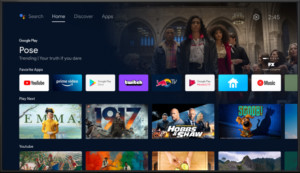
The Captivating World of Slow Television
Slow Television, a genre characterized by extended, unedited broadcasts of everyday events, has captivated audiences worldwide. From a 7-hour train journey in Norway to the mesmerizing crackling of a fireplace, slow TV offers a unique and calming viewing experience. This article delves into the history, popularity, and notable examples of this intriguing form of entertainment.
A Journey into the Origins of Slow TV
While the precise origins of slow TV remain unclear, some trace its roots back to Andy Warhol’s 1964 film “Sleep,” a 5-hour and 20-minute observation of a sleeping poet. This experimental piece challenged conventional notions of filmmaking and paved the way for a genre that embraces the beauty of the mundane.
Slow TV distinguishes itself by presenting events in real-time, without editing or scripting. The focus is on transition and movement rather than narrative tension. This immersive approach allows viewers to experience the world at a natural pace, fostering reflection and contemplation.
The Norwegian Phenomenon
The Norwegian Broadcasting Corporation (NRK) played a pivotal role in popularizing slow TV with its 2009 broadcast of a 7-hour train journey, “Bergensbanen – Minutt for Minutt.” This groundbreaking program sparked a national obsession, leading to further slow TV productions featuring boat voyages, fishing expeditions, and even firewood burning.  NRK continues to produce a variety of slow TV programs, covering topics ranging from knitting to academic lectures, consistently attracting large audiences.
NRK continues to produce a variety of slow TV programs, covering topics ranging from knitting to academic lectures, consistently attracting large audiences.
The Allure of Slow TV: A Counterpoint to Modern Life
The popularity of slow TV can be attributed to its alignment with the Slow Movement, a cultural shift advocating for a slower pace of life. In a world saturated with information and constant stimulation, slow TV offers a respite, allowing viewers to “savor the hours and minutes.”
Slow TV provides a mindful space without rejecting technology. Its high-definition visuals enhance the viewing experience, immersing audiences in the present moment. As journalist Nathan Heller suggests, slow TV serves as a backdrop for personal reflection, allowing viewers’ inner lives to flourish.
The success of slow TV in Norway may be linked to a deep appreciation for the country’s natural beauty and a desire to connect with it despite modernization. Programs like “Hurtigruten,” viewed by roughly half of the Norwegian population, exemplify the genre’s ability to foster national unity and shared experience.
Must-See Slow TV Experiences
Several slow TV programs stand out for their captivating simplicity and immersive qualities:
-
Bergensbanen – Minutt for Minutt: The iconic train journey that launched the genre, offering breathtaking scenery and a mesmerizing travel experience.
-
Piip-show: A charming observation of birds in a birdhouse, showcasing the beauty of everyday animal life.
-
Relax with Sheep: Six tranquil hours of sheep grazing in California vineyards, a hypnotic and calming visual experience.
-
National Knitting Evening: A live attempt to break a knitting world record, filled with unexpected moments and the rhythmic beauty of handcrafts.
-
Fireplace For Your Home: Crackling Birchwood: Netflix’s contribution to slow TV, offering the warmth and comfort of a crackling fireplace.
-
10 Hours of Fireworks: A dazzling display of fireworks, evoking childhood wonder and providing a joyful and relaxing experience.
Conclusion
Slow television offers a unique antidote to the frenetic pace of modern life. Its unedited, real-time broadcasts of ordinary events provide a space for reflection, mindfulness, and connection with the present moment. From scenic train journeys to the simple pleasures of birdwatching, slow TV continues to captivate audiences with its calming and immersive qualities.








